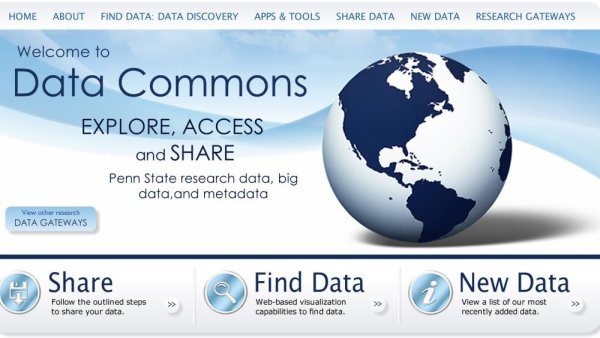Data Commons connects researchers through data sharing
| psu.edu
In order to promote open access to research data, many funding agencies such as the National Science Foundation (NSF) and the National Institutes of Health (NIH), require that research data generated by publicly-funded projects be made publicly available. In addition, some journals require authors to make materials, data and associated protocols promptly available to readers as a condition of publication. Researchers can now more easily comply with these policies by utilizing the services of Penn State’s Data Commons.
Researchers study how to accurately measure a city's greenhouse gas emissions
| phys.org
If a community wanted to cut its greenhouse gas emissions and decided to take steps to do it, how would it know if the steps it was taking worked?
Promotions in academic rank, effective July 1, 2016
| psu.edu
The following is a list of academic promotions for tenured and tenure-line faculty members at Penn State, effective July 1, 2016.
Science Seminars: Jan. 21 to 27
| psu.edu
Science Seminars for Jan 21 to 27
Video: Coal may be the bridge to ushering in new energy technology
| psu.edu
Through the 20th century, the world relied on fossil fuels, most notably oil and coal, to supply its growing energy needs. Now, while the world ponders its energy future, coal remains a plentiful and a reliable means to meet much of today's energy demands. Rather than oil, this other "dark fuel" -- if burned more efficiently and cleanly -- just may be the bridge needed to usher the world fully into the next generation of energy technology.
Hydrogen: The future fuel
| psu.edu
Beyond petroleum Is hydrogen the answer? "I will get right to the point," declared Nobel laureate Richard Smalley, speaking before Congress. "Energy is the single most important problem facing humanity today. We must find an alternative to oil. We need to somehow provide clean, abundant, low-cost energy to the six billion people that live on the planet today, and the 10-plus billion that are expected by the middle of this century."





